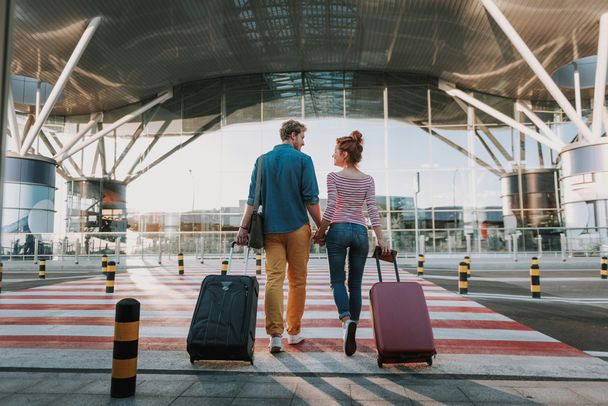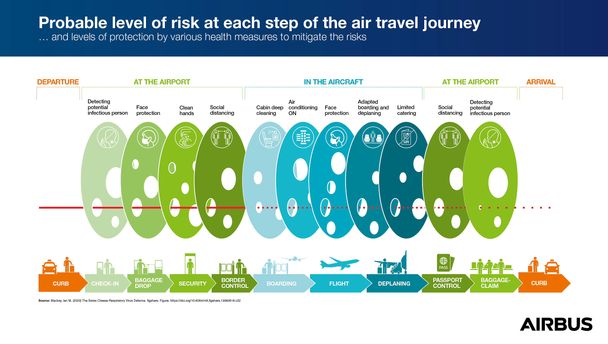How data is enabling a return to the skies

When passengers were surveyed earlier in 2021 on their opinion of getting back on a plane again, 68% said they felt “frustrated with the loss of freedom to travel”. Those who took part indicated that safety is paramount, however a better balance needed to be struck between the current travel restrictions and a path forward out of the crisis, all while cohabitating with the virus.
The desire to restart economies and foster mobility has outpaced the global vaccination rollout. If everyone adopts a layered approach to flying, passengers, airlines, and airports can proactively lower the risk. And by combining new insights we can harness this approach even further. One of these developments is a risk model designed to support governments in making data-driven decisions to safeguard the reopening of domestic and international air travel.
Airbus believes that air transport-related health risks should and can be addressed in a similar way to aircraft safety.
Aircraft safety has been a top priority for aviation, long before this current pandemic. On every step of the passenger journey, from airport, airport security, ground operations to aircraft manufacturers and airlines, all actors have made tremendous efforts to deploy rigorous and continuous flight safety, that includes passenger health.
Not only are these actors highly experienced in optimising the flow of passengers during air travel, but they are also uniquely placed to control the stages of the journey, advise on where to lower any risks, and ensure adherence to them.
Modelling the remaining risk
Airbus has developed a risk-management model which calculates the risk of virus transmission and translocation by modelling the various steps and parameters in the curb-to-curb air travel journey. The objective of the model is to support government and regulatory bodies in making data-substantiated decisions when reopening air travel. This is timely and relevant as the first travel corridors are being discussed between low risk or “green” countries.
The evaluation quantifies the level of risk for each step and takes into account the various health and safety measures, such as wearing face protection and different testing and quarantine scenarios.

Probable level of risk at each step of the aur travel journey
In practice, the model displays several protection and screening strategies that can be activated on a chosen route and simulates the impact on lowering the overall risk through applying those measures.
The freedom to move maintained
While a zero-risk strategy is both difficult to achieve and has detrimental effects on the global recovery of economies and society at large, there are proactive ways to ‘cohabitate’ with COVID 19 without putting people unduly at risk while supporting our freedom to fly.
A safe return to air travel is possible today and the end-to-end risk model can be a meaningful support to enable governments and regulatory bodies to make data-substantiated decisions.

Woman and child at airport, looking out of the window